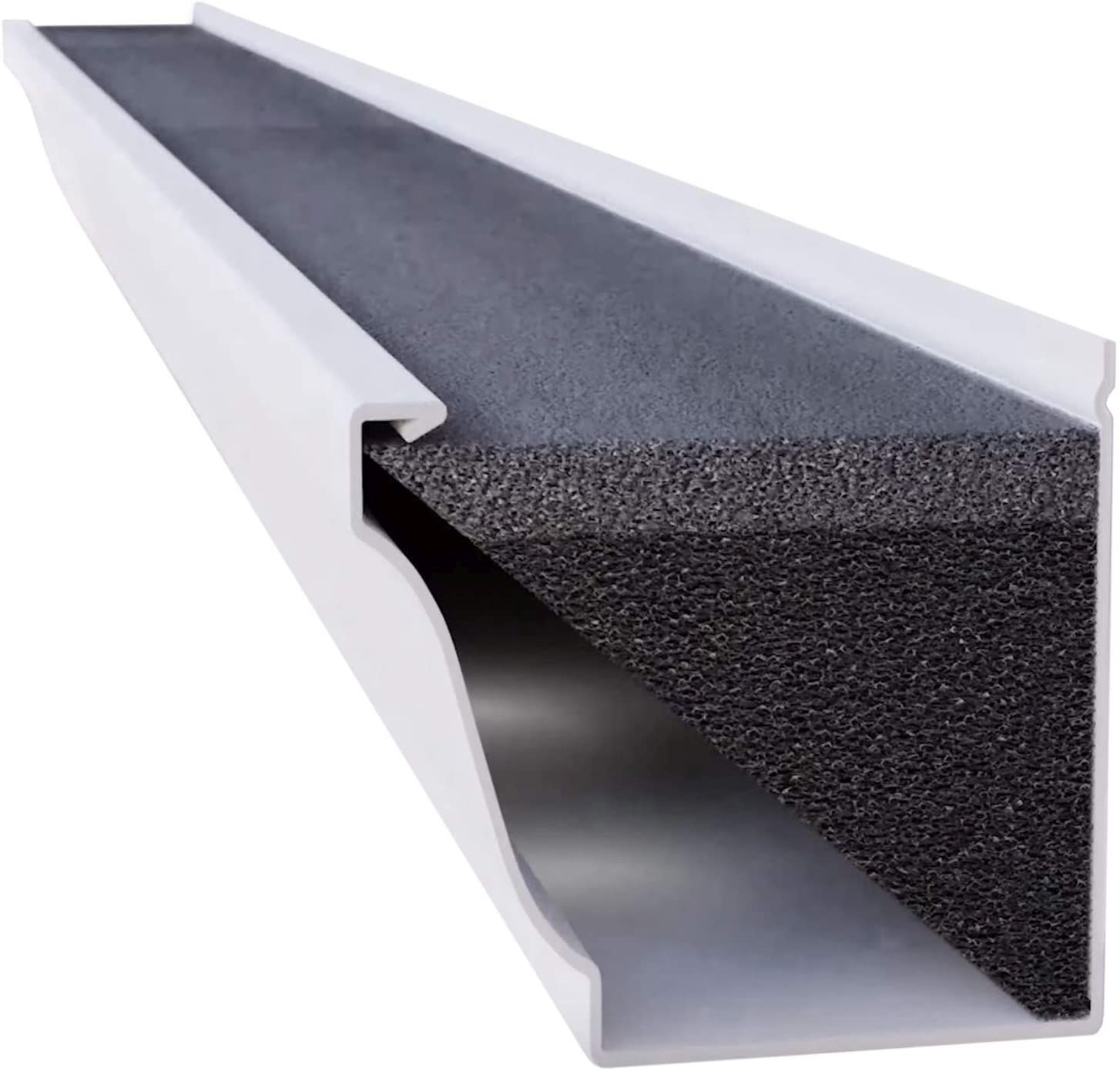Last Updated on: 6th March 2021, 09:47 pm
Gutters are a series of pipes that drain water from your roofing system to your downspouts, which are the pipes that carry the water to the ground.
The rainwater is then either stored or diverted into a storm drain, or other water collection system. Downspouts are attached to the wall of a building and are made to be Eave-to-Eave.
The half-round gutters
The half round gutters used to be very popular in the past.
Their manufacturing was quite simple, they could be produced easily from the hollowed raw tree stem (wooden gutters) or from the bent steel plate (metal gutters, later galvanized or zinc coated).
Even today the half-round gutter is still very popular in Europe as it offers some advantages compared to square or K style (OG) gutters.
Half rounds are a popular choice of gutter due to their ease of installation, durability and resistance to rust. They can collect leaves and other debris, so they should be cleaned often.
Half-round gutters advantages
- the half round gutters provide less chances to develop clogging.
Their inner shape is smoother than the inner shape of square or K style gutters (no edges where the mess can sediment), the debris is better conducted by the rainwater;
- the half round gutters are least affected by corrosion than the square or style K gutters.
This has the same reason as above, having a smoother inner shape than the gutters with edges, there is a smaller chance the wet areas will form that usually cause the corrosion.
The half round gutters combine the reliable service with smart and stylish design.
Half-round gutter disadvantages
The main disadvantage of this type of gutter is that the inner space of the half round gutter is smaller than the inner space of the square gutter.
E.g., the flow area of the half-round gutters with 5 inches (approximately 12,7 cm) diameter (2*PI*r or PI*d) is only 15,7 square inch (39,9 square cm), but the flow area of the square gutter with 5×5 inch profile represents 25 square inches (161,3 square centimeters).
Thus, when designing the gutter system you have to be aware of the fact that the diameter of half round gutter must be always little larger than the width of the square or K style gutter to drain the same volume of rain water.
The square or K style gutters
The style K gutters (OG gutters, OGEE gutters) have been frequently used for the last 40 – 50 years. Now they are the most common type of gutter. They have a seamless appearance when installed on the roof. The gutter downspouts can be installed from the inside of the gutter or from the outside. When installing the downspouts on the outside, K-style gutters help to conceal them from view.
They fit better the modern architecture trends (are less visible as they blend better with the other building components).
K-style gutters advantages
The K style gutters advantages are opposite to the half round gutters disadvantages and vice versa.
- the main advantage of this gutter profile is that they can transport more rainwater than the half rounds with the equivalent diameter;
- another advantage is that – because of the shape – the K-style gutters are firmer than the half-round gutters (harder to bend or protrude). Therefore, when compared with half-round gutters, thinner material can be used to achieve the same mechanical properties and the square or K style gutter are lighter (easier to manipulate).
The K style gutter disadvanatges
- the edges offer more chances for the wet debris and mud to sediment and cause corrosion and leaking;
- for the same reasons the K-style gutters are harder to clean (they require more effort to achieve the same results as with the half-round gutters).
